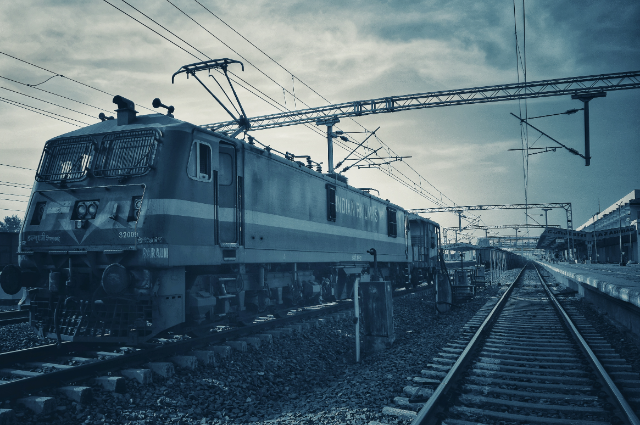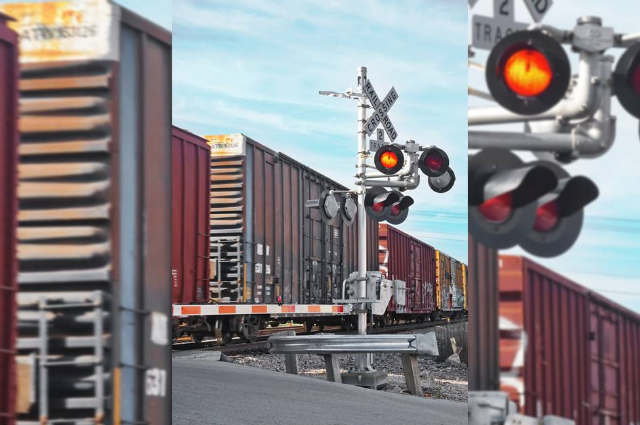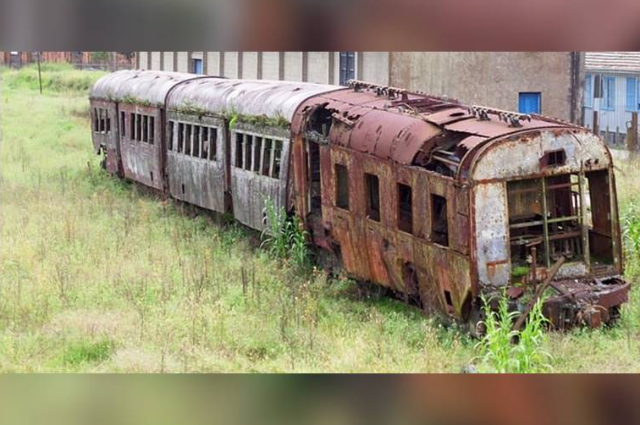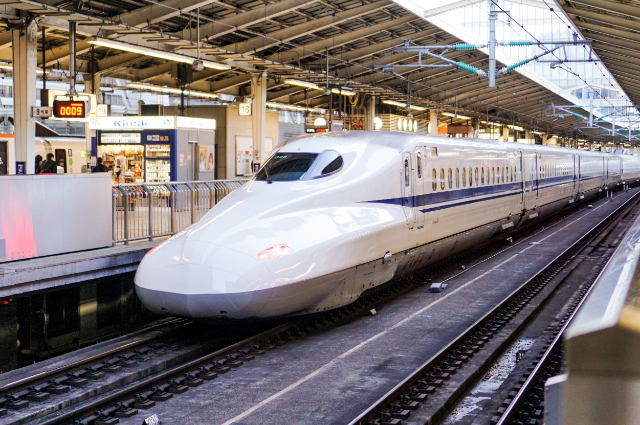Introduction
Three trains crashed in the Balasore district of Odisha, India on 2nd June 2023. The collision occurred when the Coromandel Express mistakenly entered the passing loop instead of the main line near Bahanaga Bazar railway station and collided with a goods train. As a result of the Coromandel Express's high velocity, 21 of its coaches derailed, with three of them colliding with the SMVT Bengaluru-Howrah Superfast Express on the neighboring track.
The train crash involved three trains mainly which were; Yesvantpur-Howrah Superfast Express (12862), Shalimar-Chennai Central Coromandel Express (12841), and a goods train. The place where the Train accident took place had 2 main lines and 2 loop lines on both sides. For explaining these timings of trains arrival time was also noted. At 6:40 pm, the Balasore-Bhadrakh journey of the Coromandel Express commenced in Odisha. By 6:52 pm, the train arrived at Bahanaga station promptly after receiving the green signal. Around 6:55 pm, the Yesvantpur-Howrah Express, traveling in the opposite direction on the second line, approached Bahanaga station.
However, due to an unforeseen occurrence, the Coromandel Express deviated from its intended path on the main line and unintentionally entered the loop line, where a stationary cargo train loaded with iron ore was already stationed. Consequently, a collision transpired between the passenger train and the goods train.
Similar Incidents of Train casualties have Happened in the past

Picture by - https://unsplash.com/photos
India has experienced numerous unfortunate train incidents over the years, including the nation's most severe one in 1981, resulting in the loss of a minimum of 800 lives. These accidents were attributed to different factors, such as mistakes in signaling, train technology systems, and due to defects in tracks as well.
Let's look at some Train accidents that have happened in the past similar to the Balasore train accident in Odisha.
In Bihar in June 1981, a tragic incident occurred known as the Bihar Rail accident, which holds the unfortunate record as the deadliest train accident in the country and the second largest worldwide. During a cyclone in Balaghat, Bihar, on June 6, 1981, a passenger train carrying an excessive number of people experienced a devastating derailment from a bridge causing seven out of nine bogies to fall into the Baghmati River. The train was overcrowded with passengers and even hosting four sizable wedding parties, was in route from Mansi to Saharsa. The exact death toll remains uncertain, with estimates ranging from 800 to 2,000 casualties due to the challenging recovery process of waterlogged bodies over several days. Given the circumstances, determining the precise number of passengers on board proved impossible.
In October 2005, in Velugonda, Andhra Pradesh, a tragic incident took place where numerous carriages of a passenger train veered off the tracks while attempting to traverse a section that had been submerged due to a flood. The calamity resulted in the unfortunate loss of approximately 100 lives, with an additional 92 individuals sustaining injuries. The mishap unfolded around 4:15 am when seven out of the fifteen carriages of the train were submerged in the water. The train was in the process of crossing a bridge adjacent to a reservoir when it derailed, owing to the tracks being washed away by the deluge.
In August 1999, in Gaisal, West Bengal, a tragic incident took place. During the early hours of August 2, an accident occurred at a remote station when two trains collided. The Avadh Assam Express from New Delhi and the Brahmaputra mail at Gaisal railway station, Uttar Dinajpur, West Bengal, were involved in the collision, resulting from a signaling error. It is worth noting that this unfortunate event transpired around 1:45 am. At the time of the accident, maintenance work had closed three out of the four tracks on the line, leaving both trains to operate on the same track. The collision was so severe that the impact caused an explosion, claiming the lives of approximately 300 individuals.
The incident known as the Peruman railway accident took place in Kerala in July 1988. Specifically, on July 8, 1988, a train experienced derailment while crossing the Peruman bridge over Ashtamudi Lake. Due to the heavy monsoon rainfall, the lake was swollen, and as a result, the train plunged into the water, resulting in the unfortunate loss of over 100 lives. The Island Express, which was en route from Bangalore to Thiruvananthapuram, had ten carriages that derailed and fell into the lake.
What caused the collision of these trains?
According to railway authorities, initial findings indicate that the accident occurred due to a signal malfunction and a "modification in electronic interlocking." In railway signaling, the electronic interlocking mechanism is responsible for establishing routes for trains within a specific region, guaranteeing the secure route of trains.
Even during press conferences when this unfortunate incident happened many officials stated that it was discovered that there was a possibility of signalling disruption. The nature of this interference whether it was manual, incidental, weather-related, due to wear and tear, or a maintenance failure; will be determined during the investigation.
Akhil Agrawal, the former Director General of Signal & Telecommunications at Indian Railways even clarified that the chances of a computerized error were minimal. It could be either due to a human error or some external factors.
The Railway Board, the apex decision-making body of the railway ministry, has recommended a separate investigation by the Central Bureau of Investigation (CBI). The CBI specializes in probing high-profile criminal cases, including major financial frauds and homicides. While the investigations are still in progress, certain tracks have been reopened for railway traffic.
The method by which signals in tracks are operated

It must be first ascertained whether the upcoming track is occupied or vacant. The signaling system is designed to determine the occupancy status of the track ahead and whether the train is directed towards the main line or loop line. When the train proceeds straight and the track is unoccupied, a green signal is displayed. In the case of the train entering the loop line and the track is clear, a yellow signal is shown, indicating the train's diversion to the loop line. According to sources, it is normal to have a maximum of two individuals assigned to a cabin for operating such signals during regular circumstances.
Was it a case of negligence as per investigation or some human interference?

Image by Greice from Pixabay
Based on the initial findings carried out by officials from the Kharagpur railway division, it has been revealed that the incident took place at the crash site. While traveling southbound at a velocity of 128 km/h (80 mph), the Coromandel Express was originally authorized to continue on the main line toward Chennai. However, without any known explanation, the signal for the main line was subsequently removed and the track was diverted to a parallel loop line adjacent to the main line.
According to the railway authorities, the track where the collision occurred did not have the anti-collision system implemented, despite receiving two warnings within a six-month period prior to the incident. These warnings highlighted the absence of the anti-collision signaling system and other deficiencies that contributed to the derailment. In February 2023, the principal chief operating manager of the South Western Railways zone sent a letter to the authorities following a near collision of the Karnataka Sampark Kranti Express via Ballari Junction. In the letter, he cautioned South Western Railways about the likelihood of derailments if the signaling system issues were not resolved. In a December 2022 report on derailments by the Comptroller and Auditor General of India, it was emphasized that inadequate staffing in the safety department of the Indian Railways would adversely affect maintenance quality. The report also disclosed that railway safety funds had consistently fallen short of their annual targets for the past four years and were misused for purchasing electrical appliances, furniture, and jackets, as well as developing gardens, and covering salaries and bonuses.
How can India Improve on the Technology for Train Tracks?
India has already got a variety of technology for averting any railway incidents, the only cause of concern is the network which those technologies are covering and how many years it will take for India to have a wide safe technology network in India for railways. , That remains a question still left to be answered.
The Coromandel Express could have been prevented from the accident if the safety features and capabilities of India's railway system, which are designed to protect trains from head-on collisions, were present and functioning on the train.
The Kavach system, developed by the Research Design and Standards Organisation (RDSO) in collaboration with three Indian vendors, is an Automatic Train Protection (ATP) system that complies with Safety Integrity Level-4 (SIL-4) standards. Its purpose is to assist locomotive pilots in preventing Signal Passing At Danger (SPAD) and over-speeding, as well as supporting train operations in challenging weather conditions like storms or dense fog.
Regrettably, when the incident of the Odisha train accident took place then the Coromandel Express did not have the Kavach system installed.
In response to inquiries regarding the absence of Kavach installation on the Coromandel Express, Jaya Verma Sinha, a member of the Railway Board, stated that even the most advanced technology cannot avert accidents if a fast-moving vehicle encounters an unexpected obstacle. Interestingly, her remarks concerning the functionality of Kavach appear to diverge from reality. Presently, Kavach has the ability to detect a locomotive approaching from any direction and determine its precise location by utilizing an onboard RFID reader that reads on-track RFID tags operating at frequencies exceeding 850 Mega Hertz.
If Kavach had been implemented, the locomotive's TCAS systems would have identified the loop line train in advance, thereby mitigating the severity of the tragic accident.
What kind of technology is in Japan for avoiding accidents and ensuring railway safety?

Photo by Fikri Rasyid on Unsplash
Japanese railways have made significant advancements in ensuring safety, particularly in the prevention of accidents like train collisions and derailments. Extensive research has led to a consistent decrease in the number of train accidents and derailments. However, it is important to note that although rare, fatal accidents still occur. For instance, in 2000, there was an incident on the Hibiya subway line in Tokyo involving a wheel-climb derailment on a curved track designed for low-speed operations. This incident prompted the Railway Technical Research Institute (RTRI) to conduct thorough studies on wheel-climb derailments, revealing that they are typically caused by a combination of factors, including a significant reduction in wheel load, a high derailment coefficient, and excessive lateral track distortion.
Moving forward, there are ongoing efforts to enhance safety in areas such as preventing accidents caused by natural disasters and external elements like vehicles at level crossings. Additionally, mechanisms are being developed to minimize human errors, further ensuring the safety of Japanese railways.
In a country like Japan, which is prone to earthquakes, railway operators must maintain constant vigilance. Currently, RTRI is collaborating with the Japan Meteorological Agency to create novel systems aimed at preventing train accidents during seismic events. For instance, they are developing mechanisms to rapidly halt trains during an earthquake and resume operations promptly thereafter. When it comes to human errors, it is widely recognized that a crucial research focus lies in assessing aptitude. In an era of highly advanced equipment, it is imperative to consider the human element—the psychological suitability of train engineers. Another related area that will likely be explored involves the implementation of improved sensors to effectively monitor the conditions ahead of the train.
Can Indian Railways replicate Japan's Technology of Railway tracks?
The Mumbai-Ahmedabad bullet train under construction will utilize the ballast-less Slab Track system, also known as the J Slab track system, which is commonly employed in the high-speed railways of Japan. Before commencing work on the Mumbai and Ahmedabad High-Speed Rail Corridor (MAHSR), a team of Japanese experts will provide training to a maximum of 1,000 Indian engineers.
The track system from Japan is unparalleled globally, and its installation demands an exceptional level of expertise from technicians. A representative from the National High-Speed Rail Corporation Limited (NHSRCL) emphasized the significance of the track as the foremost element of the high-speed rail system, requiring precise laying procedures.
A comprehensive range of 15 distinct courses will be offered, covering all aspects related to track work. These courses will include training for Site Managers, Track Slab Manufacturing, RC Track Bed construction, Reference Pin survey and data analysis, Slab Track installation, CAM installation, Rail weld finishing, Enclosed Arc welding of rails, and Turnout installation. A group of up to 20 Japanese experts will provide intensive training to Indian engineers, supervisors, and technicians, validating their skills through certification. The Surat Depot has established a dedicated training facility with three trial lines exclusively for this purpose. Currently, the training focuses on the upcoming 237 km stretch between Vapi and Vadodara.
The spokesperson of NHSRCL emphasized that only trained and certified engineers will be permitted to work on the track construction site. This measure ensures the highest level of expertise. The training program will be conducted by JARTS, a non-profit organization in Japan, selected by JICA, the funding agency for the MAHSR project.
Similarly, in other states as well Indian Railways can replicate Japan's Technology of Railway tracks for ensuring a better-advanced network and skilled employees working in Indian Railways which will help in improving efficiency, avoiding any accidents and unfortunate incidents which can be averted through advanced initiatives and actions.
Conclusion
The three-train incident was an accident which is an example of room for improvement for Indian railways to improve on rail tracks technology for having proper management. Certain measures that can be taken up may include approval for the deployment of a proper set of cutting-edge track maintenance machines which will ensure the proper functioning of train operations and thus avoid such accidents. Furthermore, an examination of railway bridges will be conducted by external auditors, encompassing non-destructive testing (NDT), inspection of submerged areas, assessment of design suitability for current loads, and evaluation of earthquake resistance. Consequently, a total of 4,835 bridges will undergo scrutiny by independent organizations. The total count of railway incidents can go up if significant protection and security measures are taken up in ensuring that any such human interference and automatic railway stoppage or track change instruments are installed to avoid derailed coaches incidents in the future.
References
- https://www.telegraphindia.com
- https://www.livemint.com
- https://www.bbc.com
- https://m.economictimes.com
- https://www.indiatoday.in
- https://www.business-standard.com
- https://www.hindustantimes.com
- https://www.ndtv.com
- https://www.ndtv.com
- https://www.financialexpress.com
